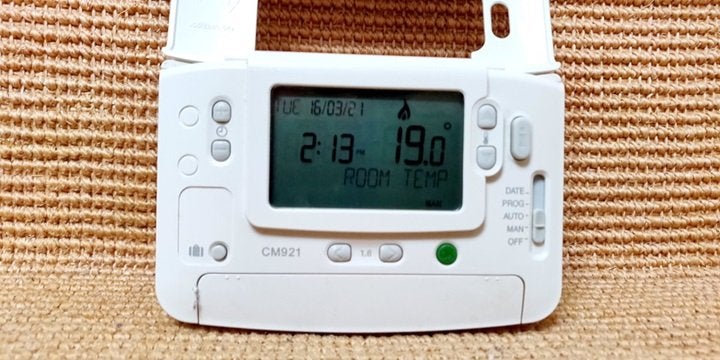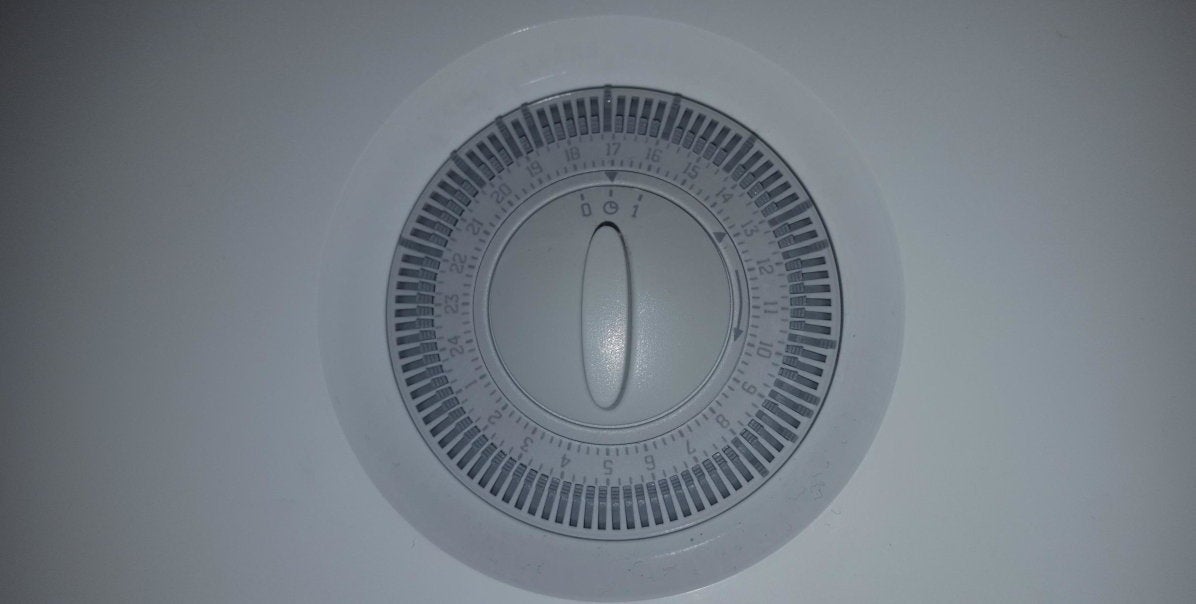- Home
- Advice and support
- Using your heating controls
Using your heating controls
Finding out how to use your heating controls will help you:
- keep your home at a comfortable temperature
- keep your energy costs as low as possible
If you move home or get a new heating system, you may need to use different heating controls.
There should normally be a manual or instruction booklet that shows you how the controls work. You can also search online with the name of the manufacturer and the full name of your model.
You can:
- ask the person or company who installed the heating system
- check with your landlord or housing association
You could also try Scope’s Disability Energy Support service. It can give advice on companies who show you how your home’s heating controls work.
Types of heating controls
In your home you may have:
- a digital thermostat
- or mechanical heating controls
Your thermostat may or may not be wireless. If it is wireless, you can put it anywhere in your home.
The best place to put a thermostat is on a wall in the room you use the most.
Try not to put a thermostat:
- above a radiator
- in the kitchen
- near doors or windows
This is because it might not be able to give an accurate reading there.
If you have a smart thermostat, you can connect it to the internet to control your heating.
What are smart thermostats? (MoneySavingExpert)
Digital thermostats
Digital thermostats let you set different temperatures for different times of the day. There are lots of digital thermostats, but most of them work in a similar way.
How to set a programmable room thermostat (YouTube, with British Sign Language)

Mechanical heating controls
Your boiler may have:
- an on-off switch
- a dial of buttons for each hour in the day which can be set to on or off
Depending on your model, you may be able to set the controls to different temperatures throughout the day.
How to set a combi boiler mechanical timer (YouTube)
How to set a mechanical central heating timer (Centre for Sustainable Energy on YouTube)

Smart thermostats
Smart thermostats are digital thermostats that connect your heating system to the internet. That means that you can use a smartphone, tablet or PC to control your heating remotely. Examples of smart thermostats are Nest and Hive.
You can set a smart thermostat to different temperatures throughout the day.
These thermostats work with most boilers. But you may need to check with your thermostat and boiler manufacturers to be sure.
Thermostatic radiator valves
These are special valves fitted onto the side of radiators. They can help reduce your energy bills.
The valve on each radiator senses the temperature of the room. Then it adjusts the radiator to how warm you want it to be.
Thermostatic radiator valves have a dial from 0 to 6. Turn the dial down to low or off in any rooms you are not using.
Snowflake and star symbols
There might also be a symbol that looks like a snowflake or a star. This is a ‘frost protection’ symbol. It stops the water inside your radiator and pipes freezing and so prevents burst pipes in winter. You can turn the valve to this symbol in rooms you are not using.
How to use thermostatic radiator valves (British Gas on YouTube)
Changing your boiler flow temperature
The flow temperature on your boiler might be set higher than it needs to be. So if you lower your boiler flow temperature it could save you money.
Flow temperature is the temperature of the water when it leaves your boiler to go to your radiators. Lowering the flow temperature will make your boiler work more efficiently.
It will not change the temperature of the hot water from your taps or your shower.
You might notice that your radiators feel cooler and your rooms take a bit longer to heat up.
If you need support to change the boiler flow temperature, contact your energy provider.
Lowering flow temperature on a combi boiler
You can adjust the dial on the boiler itself by turning the ‘radiator’ dial from 6 to 4. Do not change the ‘tap’ dial as this is for hot water.
How to reduce flow temperature of your combi boiler (British Gas on YouTube)
Lowering flow temperature on a conventional boiler
There is one dial or setting on the boiler to adjust. Try turning the dial down to 65 degrees.
Turning the dial lower than 65 degrees could pose a health risk. Harmful bacteria can develop and make hot water from your taps unsafe.
Should I turn my boiler’s flow temperature down? (Energy Saving Trust)
Night storage heaters
Night storage heaters work in a different way to central heating. They store up energy from cheaper electricity overnight and release this heat slowly the next day.
If you have an older night storage heater, there will be 2 dials:
- an input dial that controls how much heat it stores overnight
- an output dial that controls how much heat it releases during the day
In cold weather, try setting the input dial at 6 and the output dial at 1.
In milder weather, you could set the input and the output dial at 3.
How to use electric storage heater controls (Energy Saving Trust)
If you have storage heaters, your electricity tariff will probably be Economy 7. This gives you cheaper electricity for 7 hours at night. These times are usually between midnight and 7am.
Setting your heating during the day
Most people find a temperature of between 18 and 21 degrees comfortable in winter.
It is a good idea to:
- set your heating to come on half an hour before you need it
- turn your heating down by a degree if it feels warm enough
- use thermostatic radiator valves on your radiators to heat rooms you are using, not your whole home
- turn off the heating if you go out
Getting support to pay energy bills
Most energy bills have gone up recently. That can make it harder to judge whether to use the heating as much as you would like. This might be the case especially if you have a health condition that grows worse in the cold.
There are ways you can get help and support with energy bills and debt.
How you can get government help with energy bills
You could try:
Disability Energy Support service to find out what you are eligible for
StepChange Debt Charity for free online debt advice
Citizens Advice who may have a debt specialist at your local office
Last reviewed by Scope on: 15/07/2025
Was this page helpful?
Great!
Tell us how it helpedWe're sorry to hear that.
Tell us how we can improve it

